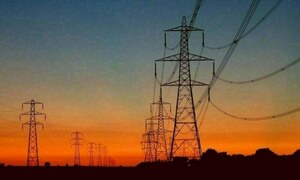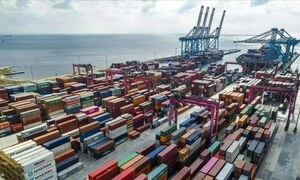The incidence of kidney disease and renal failure in both adults and children is on the rise all over Pakistan. This often makes the patient bed-ridden and to dialysis and even causes death. However, with proper public and physician education, this grim scenario can be avoided and lives can be saved in lot of cases.
It is estimated that 100 per million people suffer from Renal Failure every year in Pakistan. In Karachi only 1000 patients every year need dialysis and kidney transplantation. According to SIUT records 191,000 patients were treated for kidney diseases in 2000, out of Pakistan's gross population of 144 million. About 80 percent patients came from Sindh for dialysis and kidney treatment out of total patients 42.1 percent were females and 57.9 percent were males.
This chronic disease is prevalent all ages but people above 50 years of age are more effected by the kidney diseases. Urban population is more affected than rural population, as figure shows that 25.9 percent rural population is effected while the affected urban population is 74 percent.
HYPERTENSION AND THE KIDNEY: Hypertension is considered as a silent killer of patients who have none or minimal symptoms of high blood pressure. Kidneys are the prime organs for blood pressure control. Hypertension results in high blood pressure and in turn kidneys can be damaged by uncontrolled high blood pressure.
Benefits of lowering high blood pressure include reduced instances of stroke, myocardial infraction, heart failure and renal failure.
Many categories of drugs are used in lowering blood pressure which include, thiazide diuretics, angiotensin covering enzyme inhibitors, angiotensin receptor blockers, bete blockers, calcium channel blockers, alpha blockers, to name a few.
Optimal Blood Pressure of a person of 55 years must be <120mmHg systolic and <80mmHg diastolic. Each increment of 20mmHg to 10mmHg doubles the risk of Cardiovascular Disease (CVD). Lowering Blood Pressure can help preventing heart failure by 50 percent.
Lifestyle modification is a must for treating hypertension. Waist size is also a key factor. Anti-hypertension drugs must be given to the patients to control Blood Pressure, more than one drug is required to control BP in Chronic disease.
CHRONIC RENAL FAILURE: The prevalence of Chronic Renal Failure (CRF) in developing countries is unknown. The data on the incidence of renal diseases mostly comes from developed countries.
The Chronic Renal Failure occurs more often in rural areas. Diabetes Mellitus is the main cause of Chronic Renal Failure followed by hypertension, obstruction, stone disease, tubulo intestinial nephritis in our country. About 50 percent of patients suffering from chronic kidney failure are also suffering from diabetes mellitus or hypertension alone or in combination.
ACUTE RENAL FAILURE: The second most common problem is Acute Renal Failure. The most common causes of ARF are: Infections, Hyprovolaemia, obstretical complications, malignancy and chemotherapy and post surgery.
MEDICAL CAUSES: Malaria, Pneumonia, Septicemia, Subacute Bacterial Endocarditis, Hepatitis, Liver abscess, brain abscess, Tuberculosis.
OTHER CAUSES: Snakebite, poisoning by Copper Sulphate.
SURGICAL CAUSES: Post operation, obstructive nephro and calculus disease, trauma etc.
The third most common cause of kidney diseases is Nephrotic Syndrome.
The miscellaneous kidney diseases include Diabetic nephropathy, Hypertension, Urinary tract infection, Calculus Disease, Obstructive Uropathy, Single/atrophic kidney, Polycystic kidneys.
Most of the patients face renal problems like Chronic kidney failure, Acute kidney failure, Nephrotic syndrome, acute glomerulonephritis, Polycystic kidneys, Diabetes, Hypertension, Urinary tract infection Urinary incontinence.
DIALYSIS AND TRANSPLANTATION: Majority of patients does not go for transplantation or dialysis because of cost problem, education about the disease, access to transplantation centers. Some medical reasons of non-compliance with dialysis and kidney transplant are active infection for example TB, Malignancy, HIV, drug abuse, psychiatric illness.
The patients who had the following reasons could not undergo kidney transplant as they were not fit for it but could have dialysis - Cirrhosis, fitness for anesthesia, unwilling to quit smoking, cardiomyopathy, Coronary artery disease, history of Gallstones, Hepatitis B, C, history of pancreatitis.
Some patients outcome of dialysis is very poor because they were also suffering from diabetes millitus, hypertension, cardiovascular diseases, malnutrition, anemia, immune response, infections, psychological issues, time on dialysis also counts.
There is a need of awareness programme for renal disease and development of centres to cater the growing number of patients.
BR100
11,821
Decreased By
-45.2 (-0.38%)
BR30
35,734
Increased By
36.3 (0.1%)
KSE100
113,617
Decreased By
-531.2 (-0.47%)
KSE30
35,758
Decreased By
-193.7 (-0.54%)

























Comments
Comments are closed.